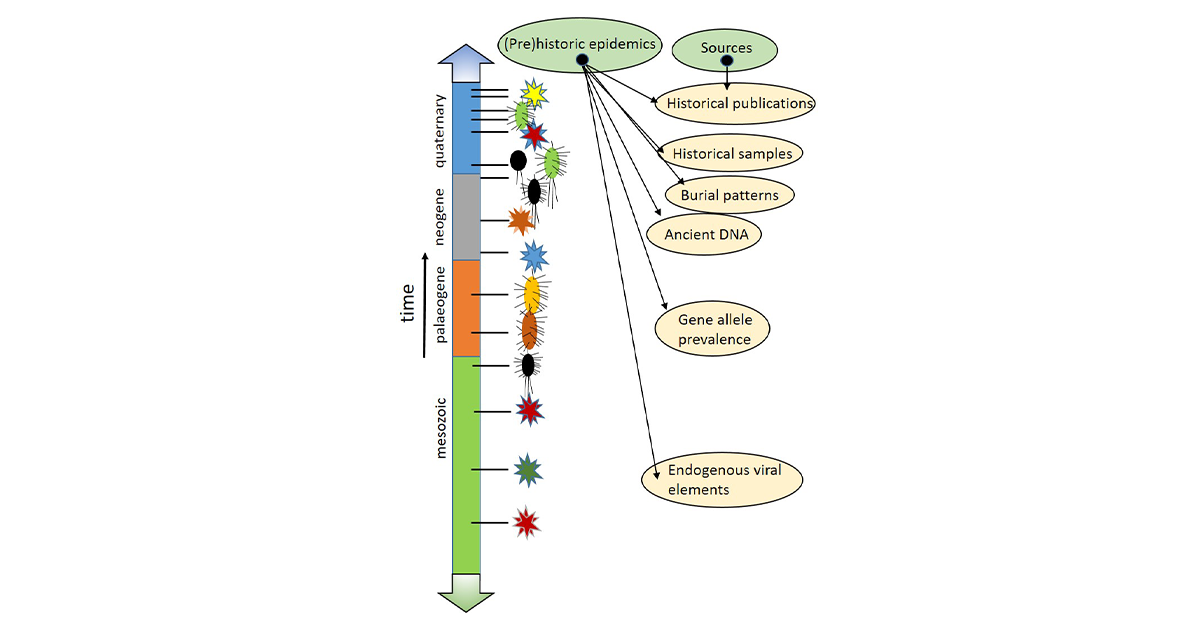- 2.2Impact Factor
- 4.3CiteScore
- 27 daysTime to First Decision
Historic and Prehistoric Epidemics
Special Issue Information
Dear Colleagues,
All life forms on Earth are, and have been, challenged by parasites with pathogenic properties. Attacks by such pathogens, when the number of hosts is sufficiently large, can cause massive outbreaks of infection and disease, as the current COVID-19 pandemic illustrates. However, epidemics are not something new. In fact, there is an abundance of disease outbreak stories from the past. Examples include the famous "Spanish" flu of 1918, the sweating sickness, which ravaged England and parts of Europe in the late 15th and 16th centuries, and of course the plague, cholera and smallpox, which have been around from the Middle Ages to the present.
Although historical accounts are highly descriptive and can often be used to retrace epidemics, knowledge of the actual pathogens involved is a recent advance. The relatively new fields of ancient DNA and paleovirology have paved the way for actual research into the epidemics of the past. Ancient DNA can be taken by extracting genomic material, which can contain the responsible microbes, from buried victims or stored tissue remains; paleovirological techniques work by "digging" for viral fossils from the ever-growing number of genome assemblies. Such endogenous viral elements can be used to reconstruct the prehistoric spread of these viruses. The molecular knowledge of historic and prehistoric epidemics may help us understand the past and the present, and prepare us for the future.
Dr. Antoinette van der Kuyl
Guest Editor
Manuscript Submission Information
Manuscripts should be submitted online at www.mdpi.com by registering and logging in to this website. Once you are registered, click here to go to the submission form. Manuscripts can be submitted until the deadline. All submissions that pass pre-check are peer-reviewed. Accepted papers will be published continuously in the journal (as soon as accepted) and will be listed together on the special issue website. Research articles, review articles as well as short communications are invited. For planned papers, a title and short abstract (about 250 words) can be sent to the Editorial Office for assessment.
Submitted manuscripts should not have been published previously, nor be under consideration for publication elsewhere (except conference proceedings papers). All manuscripts are thoroughly refereed through a single-blind peer-review process. A guide for authors and other relevant information for submission of manuscripts is available on the Instructions for Authors page. Epidemiologia is an international peer-reviewed open access quarterly journal published by MDPI.
Please visit the Instructions for Authors page before submitting a manuscript. The Article Processing Charge (APC) for publication in this open access journal is 1400 CHF (Swiss Francs). Submitted papers should be well formatted and use good English. Authors may use MDPI's English editing service prior to publication or during author revisions.

Benefits of Publishing in a Special Issue
- Ease of navigation: Grouping papers by topic helps scholars navigate broad scope journals more efficiently.
- Greater discoverability: Special Issues support the reach and impact of scientific research. Articles in Special Issues are more discoverable and cited more frequently.
- Expansion of research network: Special Issues facilitate connections among authors, fostering scientific collaborations.
- External promotion: Articles in Special Issues are often promoted through the journal's social media, increasing their visibility.
- e-Book format: Special Issues with more than 10 articles can be published as dedicated e-books, ensuring wide and rapid dissemination.

